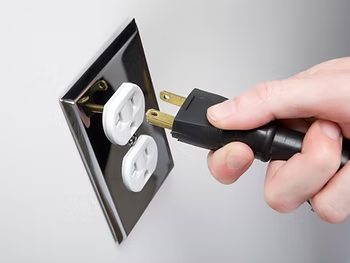How Many of These Routine Home Maintenance Tasks Do You Complete?
- Smart Choices
- Jan 18, 2022
- 3 min read
Updated: Nov 21, 2022

While the joys of homeownership are numerous, there are also a lot of maintenance tasks necessary to ensure your home, appliances and systems are working properly.
Keeping up with those tasks is necessary to ensure your home is safe for you and your family, to keep the systems running as efficiently as possible and to prevent small problems developing into large (and more expensive to fix) issues.
While an entire list is lengthy and also dependent on your home and lifestyle, here are a few common tasks you may not be on top of. See a more complete list of seasonal maintenance tasks here.
Inspect fire extinguishers at the same time you check your smoke alarms and carbon monoxide detectors to be sure they are working. After all, if you do have a small home fire, you want to be sure your extinguisher will work. Follow these steps for checking your extinguishers.
Clean bathroom exhaust fans twice a year. Moisture accumulating on the surface of the cover can turn into mold and the fan can’t properly expel moisture and odors if the cover is dirty. A thorough cleaning with soapy water can keep the fans operating properly.
Clean your kitchen fan (range hood or a fan included in an over-the-stove microwave). Kitchen vent hoods are similar to bathroom fans, but with grease and food particles accumulating in the hood/filter, instead. This is an important cleaning job as accumulated grease can cause a fire. Clean monthly if you cook a lot. Find more details on how to clean a range hood here.
Clean your dryer vent at least twice a year. While you probably empty the lint filter after every load or two, you need to go beyond that to prevent drier fires. Lint also builds up through the entire duct system so your ductwork must be thoroughly cleaned out. And don’t forget to clean the discharge area where the ductwork vents outdoors. Even if blocked ductwork doesn’t start a fire, it can slow down the drying process and use more energy than needed.
Test your sump pump and check the backup battery system (if you have one). Checks should be made monthly or quarterly, especially before times (such as spring rains and floods) when basement flooding is a hazard. Here is a detailed description of the steps in maintaining sump pumps.
Clean refrigerator coils. Out of sight, out of mind is a common reason many of us fail to perform routine maintenance. That is especially true of cleaning refrigerator coils. Coils are often at the back of the refrigerator (meaning you must move your fridge out from the wall to access them) and may be covered with a panel that must be removed. Keeping the coils clean, a task that may take only 15 minutes a couple times a year, can save energy and extend the life of the appliance. Here is a how-to.
Clean window weep holes. To keep outside water from entering your home through your windows, one or several “weep holes” are located in the window frame between the window glass and the outdoors. Those holes allow water to drain. If the holes get plugged with dirt and debris, water can back up and flow inside. Check this system twice a year. See a video showing how to clear the holes, keeping in mind that different window systems may recommend slightly different ways to unplug the holes.
Keep drains flowing and avoid leaky pipes and faucets. Frequently—and systematically—check for leaks under sinks; if you find moisture or a musty smell, do further checking to determine where the moisture is coming from. At the same time, test sinks and showers for speed and drainage. If the drainage is slow, you probably need to clear that drain. Also turn on each faucet to be sure no handles or valves are leaking. If any of these areas show problems, get the drain, pipe or faucet fixed ASAP to prevent bigger problems from developing.
Remove calcium deposits from shower heads. If the water pressure on your showerhead has decreased, it may be because of calcium-deposit blockage. removing calcium buildup using vinegar may be the answer to greater comfort and efficiency. Here’s how. P.S. You can use vinegar to keep your dishwasher and clothes washer deodorized, mildew- and rust-free, too.
Clean and sanitize your in-refrigerator water dispenser and ice maker. Occasionally—and definitely if you notice an off-taste, a weird smell or cloudy ice cubes—take time to ensure your water and ice are safe to use. Follow the details in your fridge’s use and care manual (look online if you can’t find your hard copy). Generally, you need to replace water purifier cartridges periodically for clean water, and for ice makers, dump old ice, wipe down all in-freezer components and thoroughly wash out the ice bin.
Next month: Details on another important maintenance task: Maintaining your water heater.




Comments